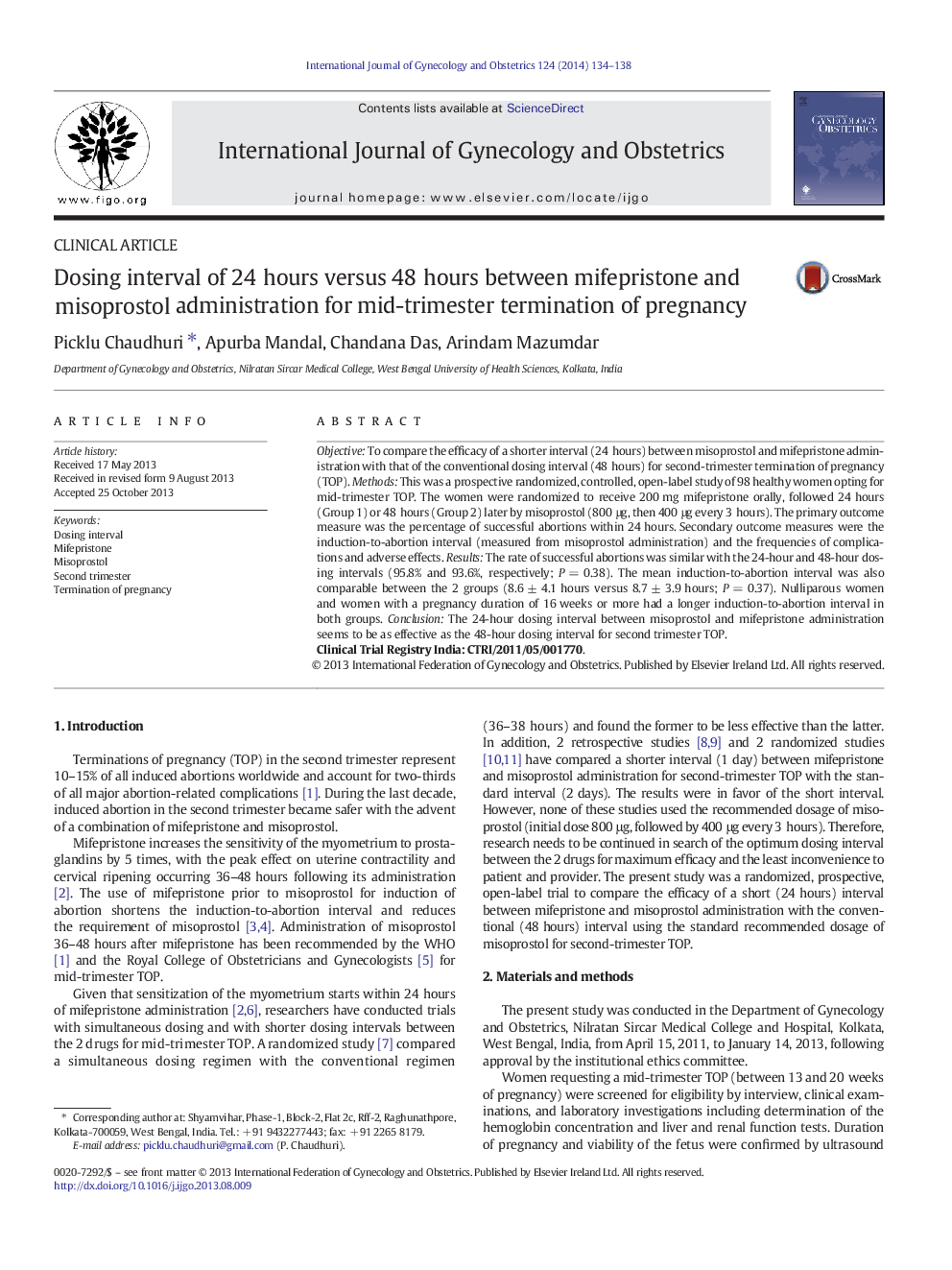| Article ID | Journal | Published Year | Pages | File Type |
|---|---|---|---|---|
| 3954223 | International Journal of Gynecology & Obstetrics | 2014 | 5 Pages |
ObjectiveTo compare the efficacy of a shorter interval (24 hours) between misoprostol and mifepristone administration with that of the conventional dosing interval (48 hours) for second-trimester termination of pregnancy (TOP).MethodsThis was a prospective randomized, controlled, open-label study of 98 healthy women opting for mid-trimester TOP. The women were randomized to receive 200 mg mifepristone orally, followed 24 hours (Group 1) or 48 hours (Group 2) later by misoprostol (800 μg, then 400 μg every 3 hours). The primary outcome measure was the percentage of successful abortions within 24 hours. Secondary outcome measures were the induction-to-abortion interval (measured from misoprostol administration) and the frequencies of complications and adverse effects.ResultsThe rate of successful abortions was similar with the 24-hour and 48-hour dosing intervals (95.8% and 93.6%, respectively; P = 0.38). The mean induction-to-abortion interval was also comparable between the 2 groups (8.6 ± 4.1 hours versus 8.7 ± 3.9 hours; P = 0.37). Nulliparous women and women with a pregnancy duration of 16 weeks or more had a longer induction-to-abortion interval in both groups.ConclusionThe 24-hour dosing interval between misoprostol and mifepristone administration seems to be as effective as the 48-hour dosing interval for second trimester TOP.Clinical Trial Registry India: CTRI/2011/05/001770.
